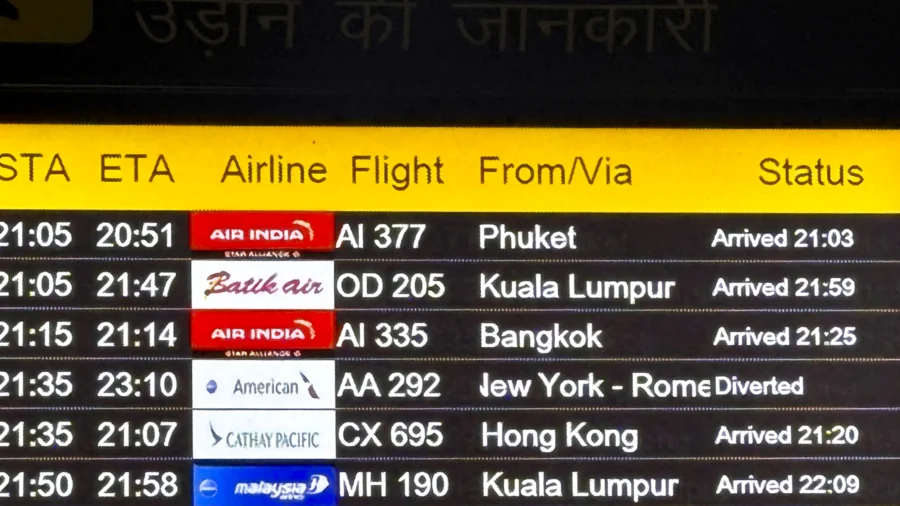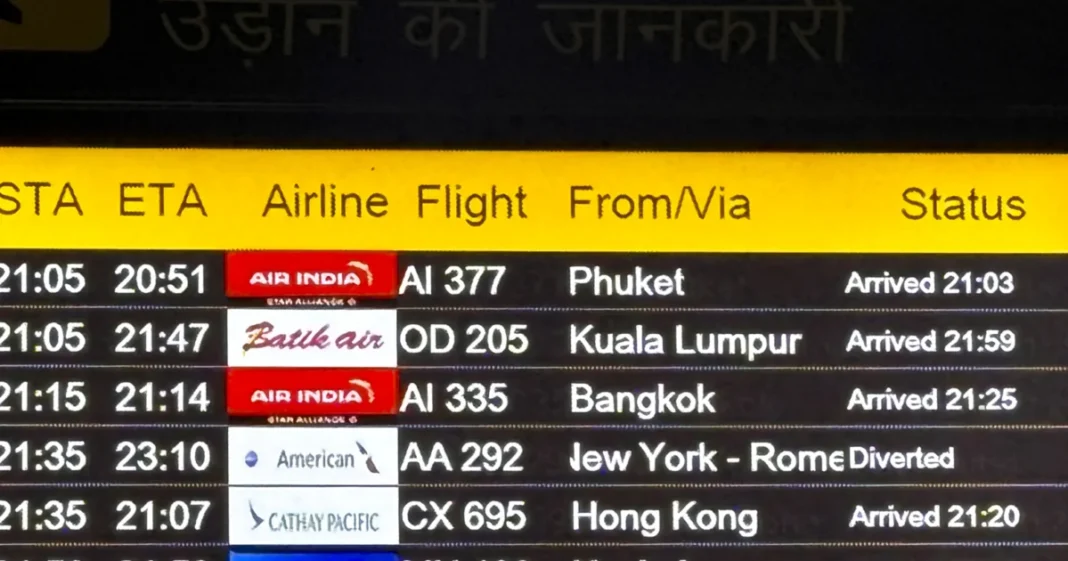
An American Airlines flight that departed from New York for New Delhi made a detour after an emergency bomb threat was reported.
“AA 292, operating from New York to Delhi, has been diverted to Rome due to a potential security threat onboard,” the airlines said in a statement issued to media outlets. “We are working closely with local authorities and will provide updates as the situation develops. We appreciate the patience and cooperation of our passengers.”
In an emailed statement to The Epoch Times, the FAA said: “American Airlines Flight 292 landed safely at Leonardo da Vinci International Airport in Rome around 5:30 p.m. local time on Sunday, Feb. 23, after the crew reported a security issue. Flight 292 departed from John F. Kennedy International Airport in New York and was traveling to Indira Gandhi International Airport in New Delhi, India.”
The diversion was made near Central Asian country Turkmenistan, cited Aviation Source News. American Airlines AA292 is a Boeing 787-9, and was carrying more than 280 passengers, according to media reports.
The flight took off for its nearly 15-hour journey at 12:31 a.m. EST on Saturday, changing its route to Rome mid-flight citing the bomb threat.
According to latest data, the flight has left the Leonardo da Vinci International Airport, Rome, and is currently headed for New Delhi with an estimated time of arrival at around 4:21 a.m. IST, on Feb. 24. The flight was delayed by six hours and 46 minutes.
On Feb. 7, another American Airlines flight, flying from Austin, Texas, to Charlotte, North Carolina, abruptly returned back to the gate after the crew detected a passenger with a wifi name containing the word, “bomb.”
According to the FAA’s order prescribing procedures to be adopted by personnel providing air traffic control services, when any information is received regarding a potential bomb threat in or near an aircraft, they must immediately notify their supervisor or the facility’s air traffic manager.
If a pilot reports the potential for a bomb on the flight, personnel are required to determine the pilot’s intentions and comply with their requests as far as possible.
The aircraft may request the location of the nearest explosive detection team. Upon receiving such a request, personnel are expected to transmit the nearest location of the detection team to the pilot. “If the aircraft wishes to divert to the airport location provided, obtain an estimated arrival time from the pilot and advise your supervisor,” the FAA states.
The Cybersecurity and Infrastructure Security Agency has issued a reference checklist for employees working at commercial facilities on how to handle bomb threats.
“Most bomb threats are received by phone. Bomb threats are serious until proven otherwise. Act quickly, but remain calm,” it advises.
From The Epoch Times


